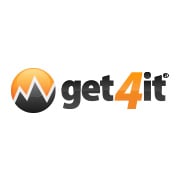04/30/2012 // Chicago, Illinois, United States // SSF // Betsy Van Die // (press release)
Stroke Does Not Discriminate – Prevention Through Technology and Risk Modification Crucial to Stopping Stroke from Striking
Stroke does not discriminate; it can strike anyone, anytime, anywhere – all races – infants and older adults – you and me – celebrities. Dick Clark, Bob Barker, Candice Bergen, Peter Boyle, Tedy Bruschi, James Cagney, Charlie Daniels, Kirk Douglas, James Garner, Hugh Hefner, Burt Lancaster, and Samantha Morton are among the famous people who survived a stroke. Joe Biden, Terri Garr, Quincy Jones, Bret Michaels, Patricia Neal, Della Reese, Sharon Stone, and Neil Young all survived a cerebral aneurysm or hemorrhagic stroke.
With 795,000 stroke cases a year in the U.S., chances are you know somebody that has suffered a stroke – a loved one, friend, neighbor, colleague, or your favorite celebrity. Some risk factors are controllable, and if modified will result in a significant decrease in the incidence of stroke according to the Dr. Jeffrey Thomas Stroke Shield Foundation (SSF). The SSF is promoting the message Technology Against Stroke this May in recognition of National Stroke Awareness Month.
“While age, race, and family history cannot be altered, most stroke risk factors can be modified or treated medically. Many stroke risk factors increase the probability of developing a host of other serious diseases including cancer, heart disease, and type 2 diabetes, adding to the grave socioeconomic and personal health burden placed on society,” said Jeffrey E. Thomas, M.D., F.A.A.N.S., F.A.C.S., founder and chairman of the SSF.
Technology Against Stroke
“Great strides have been made in minimally invasive treatment of stroke through endovascular interventions, but little progress has been made in prevention,” said Dr. Thomas. Scalable digital technologies utilizing iPhone and other platforms need to be developed and made widely accessible/affordable to help prevent stroke. The apps would incorporate technology to enable the analysis and ongoing modification of stroke risk factors in high-risk individuals. Ultimately, the SSF aims to minimize the necessity for emergency intervention through its grant program that will fund awards to researchers working on promising, cutting-edge stroke prevention modalities.
Stroke Symptoms
The range and severity of early stroke symptoms vary considerably, but they share the common characteristic of being sudden. Warning signs may include some or all of the following symptoms: Dizziness, nausea, or vomiting; unusually severe headache; confusion, disorientation or memory loss; numbness, weakness in an arm, leg or the face, especially on one side; abnormal or slurred speech; difficulty with comprehension; loss of vision or difficulty seeing; and loss of balance, coordination, or the ability to walk.
Controllable Stroke Risk Factors
Diabetes: The disease affects 25.8 million people of all ages or 8.3 percent of the U.S. population. Of those, a staggering 7 million cases are undiagnosed and therefore untreated, leading to a myriad of health implications. While type 1 diabetes (juvenile or early adult onset) is not preventable, studies estimate that 58-71 percent of type 2 diabetes can be prevented through lifestyle intervention.
Obesity: More than one-third of U.S. adults (35.7 percent) and an estimated 17 percent of children/adolescents ages 2-19 years are obese, equating to about 86 million obese people based on 2011 U.S. census population estimates.
Hypertension: An estimated 76.4 million people age 20 and older have high blood pressure and according to 2005-2008 data, more than 52 percent of cases are uncontrolled. According to 2010 mortality data, 26,577 deaths were attributed to essential hypertension.
Cigarette/tobacco smoking: The leading cause of preventable death in the U.S., an estimated 19.3 percent or 45.3 million adults smoke cigarettes. Cigarette smokers have double the risk of stroke as non-smokers and cigar/pipe smokers have a 30 percent increased risk.
Alcohol: While studies are not conclusive, most healthcare professionals agree that drinking more than one to two drinks everyday can increase stroke risk. Statistics indicate that nearly 1 out of 4 Americans admitted to hospitals have alcohol problems or are undiagnosed alcoholics.
Heart disease (atrial fibrillation, valve disease): Heart disease is the number one leading cause of death in the U.S. People with atrial fibrillation have a five-fold increase of stroke risk, with about 35 percent of all Afib patients suffering a stroke during their lifetime. In 2005, an estimated 5.2 million adults in the U.S. were diagnosed with aortic valve disease.
Hyperlipidemia (elevated cholesterol levels): About one in every six adults or 16.3 percent of the U.S. adult population has high total cholesterol.
Previous stroke: Of the 795,000 annual cases, 185,000 are recurrent attacks. Experiencing a previous stroke is a very serious indicator and puts one at a heightened risk of suffering a subsequent attack.
Stroke Shield Foundation (SSF) Prevention Tips
·If you have diabetes, control your blood glucose, cholesterol levels, and blood pressure
·Modify your diet and participate in regular exercise – under medical supervision if you are severely overweight
·Control hypertension through sodium reduction, diet modification, stress reduction, exercise, and/or medication
·Quit smoking and limit alcohol intake
·If you have been diagnosed with atrial fibrillation or valve disease, control it through medication, regular monitoring, and surgery if warranted
·Control your cholesterol levels through diet modification and/or medication
·Know the warning signs of stroke and call 911 immediately if stroke is suspected
For more information on Technology Against Stroke, visit the SSF website at http://www.strokeshieldfoundation.org, Facebook page at http://www.facebook.com/Dr.JeffreyThomasStrokeShieldFoundation, and Twitter page at http://twitter.com/#!/strokeshieldfnd.
Social Media Tags:National Stroke Awareness Month, Stroke, SSF, Stroke Shield Foundation, Stroke Risk Factors, Digital Technology, Endovascular, Aneurysm, Brain, Neuroimaging, Prevention, Medical Emergency, Jeffrey E. Thomas MD, Dick Clark, Brain Attack, Neurosurgery, tPA, Obesity, Diabetes, Hypertension, High Cholesterol, Atrial Fibrillation, Afib, Hemorrhagic Stroke, Risk Modification
Newsroom powered by Online Press Release Distribution – SubmitMyPressRelease.com



































